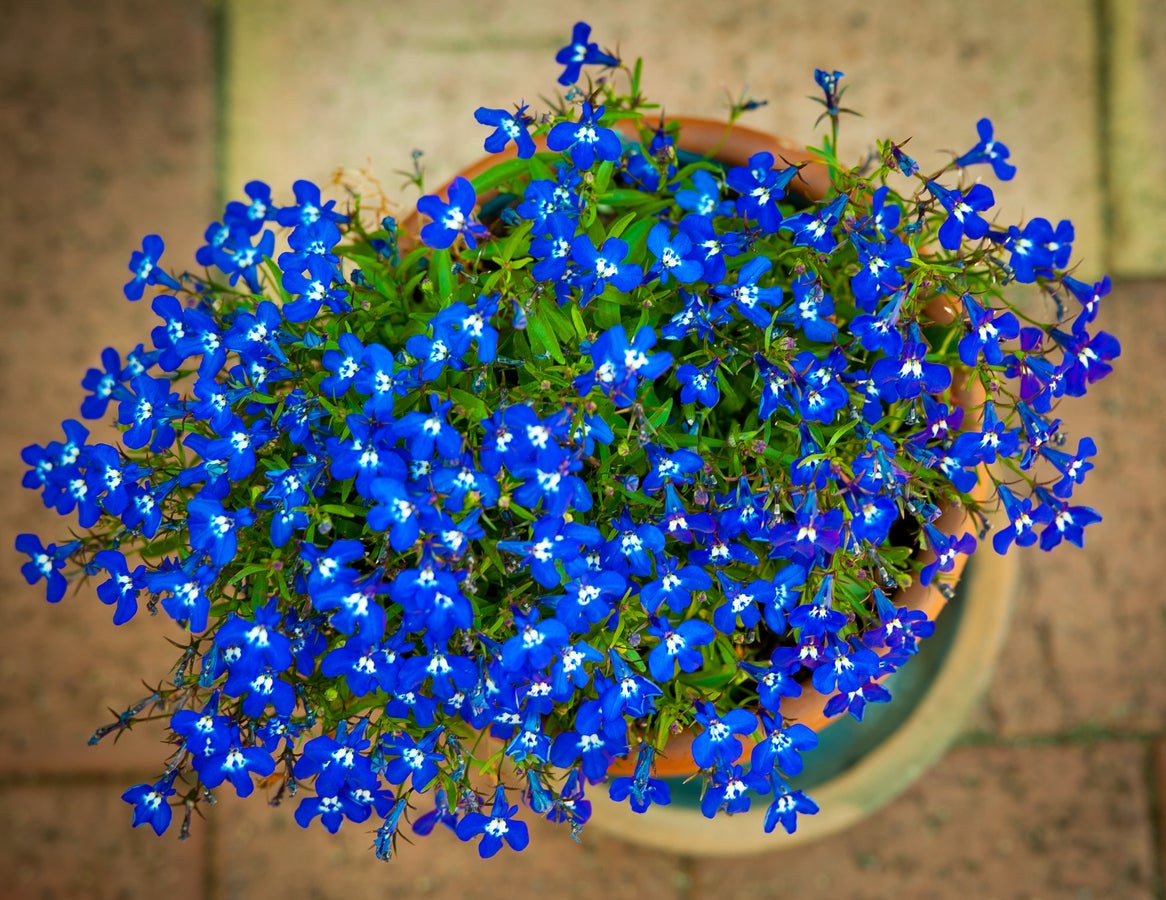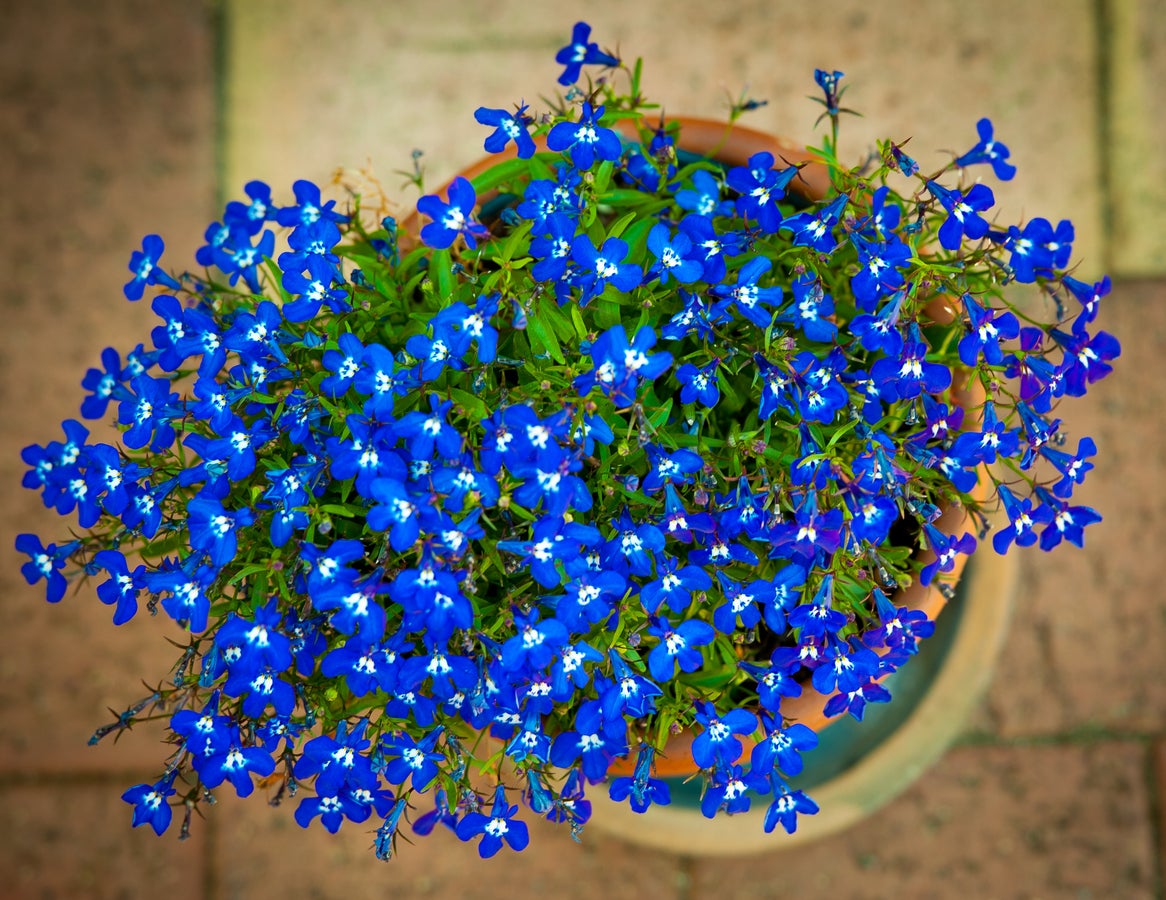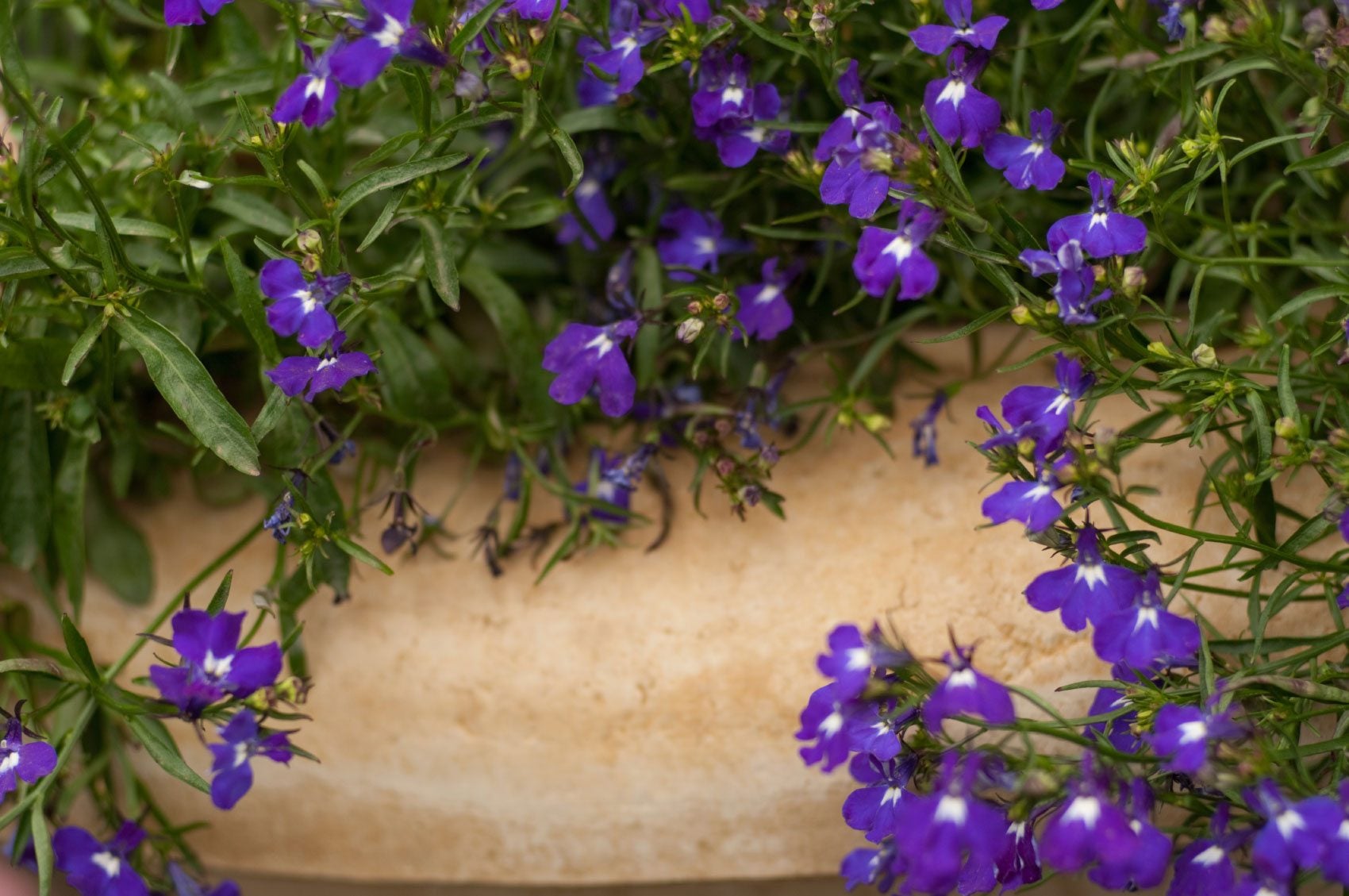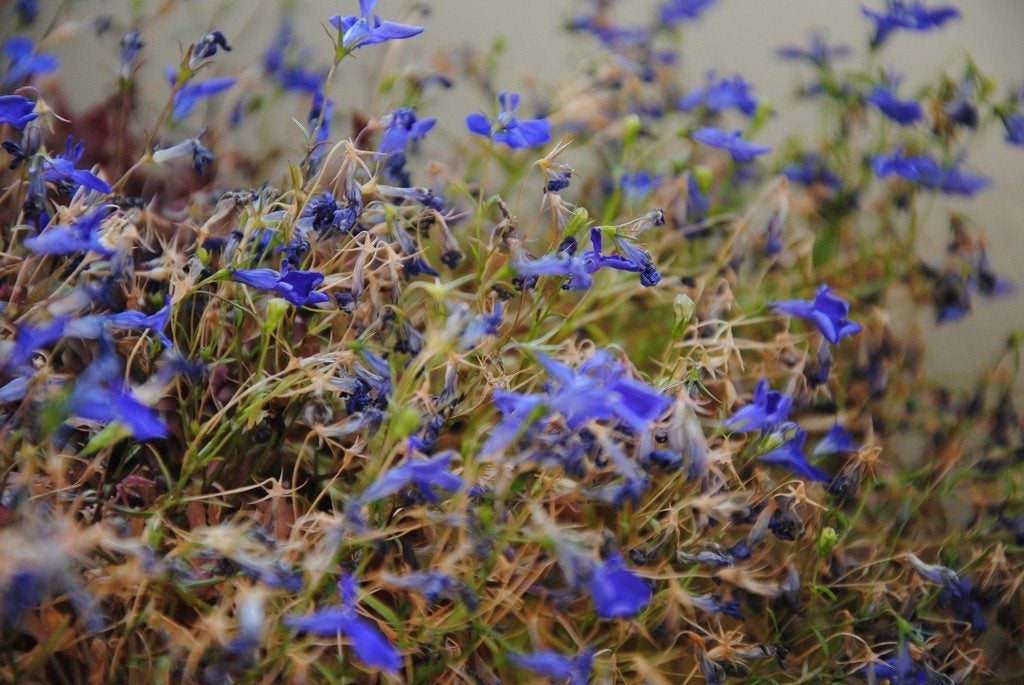Lobelia Care Guide: How To Grow Edging Lobelia
A lovely herb plant with bright blue to purple blossoms, the trailing lobelia flower is a perfect choice for filling in around garden beds, driveways and borders. It’s easy to grow and, depending on your zone, can be an annual or perennial.

Edging Lobelia Care: How To Grow Trailing Lobelia Plants
A fast-growing, trailing herb, lobelia flowers are small, colorful blossoms that make lovely edging plants along borders, paths, patios or driveways with rich green foliage.
There are hundreds of species of Lobelia flower. Most can be found growing in tropical regions or those with warm, temperate climates. Common “edging” lobelia can be grown as a perennial in frost-free regions, but in cooler zones, is commonly grown as an annual.
Lobelia grows and blooms quickly, and can fill in the borders and edges of hardscape and garden beds, as well as being a lovely addition to containers.
Quick Facts:
Botanical name: Lobelia erinus
Height: 6-9 in. (15-23 cm.)
Spread: 6-12 in. (15-30 cm.)
Gardening tips, videos, info and more delivered right to your inbox!
Sign up for the Gardening Know How newsletter today and receive a free copy of our e-book "How to Grow Delicious Tomatoes".
Sun exposure: Full Sun, Part Sun
Soil requirements: Slightly Acidic
Hardiness zones: USDA Zones 10-11
When to plant: Early Spring
Caring For Lobelia
Soil & Fertilizer Needs
Though it is somewhat adaptable, lobelia enjoys growing in soil that’s slightly acidic. Good drainage is also important, as the plants will not tolerate excessively wet or waterlogged soil. Insufficient drainage is among the most common concerns for lobelia, and can lead to various fungal diseases as well as stem and root rot.
Applying a well-balanced fertilizer monthly will help keep your lobelia plants looking their best. When the plants stop flowering, stop fertilizing them.
Water & Light Requirements
Lobelia plants appreciate consistent irrigation throughout the growing season. Cool, moist soil helps them continue to produce flowers through even the hottest portion of the summer.
The amount of sunlight each plant receives plays a role in helping the plants flourish. Lobelia performs best in a location that receives full sun throughout the day. In warmer growing zones, most lobelia plants benefit from some afternoon shade to shelter them from the midday heat.
Basic Lobelia Care
Lobelia plants can be difficult to start from seed, but are often available as bedding plants in very early spring. This makes them a good choice for ornamental beds that need seasonal color, as well as hanging baskets and containers. Beyond consistent watering, lobelia plant care is relatively simple.
You may want to deadhead or prune the plant. Note that lobelia is considered to be quite toxic. Proper research before planting is essential so that gardeners and visitors are safe from its effects.
Problems, Pests, & Diseases
Proper irrigation is vital to the health of lobelia plants. As the flowers are unable to tolerate dry conditions; scheduled watering is often necessary as a means to avoid wilting, yellowing, and other foliar diseases. Lobelia plants seldom have problems with pests. However, it’s good to remain vigilant for damage caused by common garden insects, like aphids or mites. Lobelia plants have proven themselves resistant to most browsing wildlife, including both rabbits and deer.
Pruning Lobelia
efficiently drop spent flowers without the need for deadheading. Provided that temperatures remain cool, gardeners can expect an impressive period of bloom from lobelia plants.
As the weather warms, it’s not uncommon for the plants to stop flowering completely and the plants may begin to die back or start to lose their attractive appearance. Prune the plants back near to the ground to encourage new growth, which will begin with the arrival of more hospitable weather nearing autumn.
Trailing Lobelia Varieties
The following is a short list of the most popular varieties of trailing lobelia.
Blue Cascade Lobelia
Blue Moon Lobelia
Cambridge Blue Lobelia
Riviera Blue Eyes Lobelia
Regatta Midnight Blue Lobelia

Nikki Tilley has been gardening for nearly three decades. The former Senior Editor and Archivist of Gardening Know How, Nikki has also authored six gardening books.
-
 4 Superfast Composting Methods: Turn Waste Into Garden Gold In 30 Days Or Less
4 Superfast Composting Methods: Turn Waste Into Garden Gold In 30 Days Or LessTry the fastest composting methods to turbocharge your pile and transform kitchen scraps and garden waste into finished compost in just a few weeks.
By Mary Ellen Ellis
-
 Best Spider Plant Soil – Complete Soil Guide And Expert Tips For Keeping Plants Happy
Best Spider Plant Soil – Complete Soil Guide And Expert Tips For Keeping Plants HappySpider plants are fun and easy plants to grow, but what is the best soil for a spider plant? Selecting the right soil is important so they can thrive.
By Bonnie L. Grant
-
 Lobelia Winter Care – Tips For Overwintering Lobelia Plants
Lobelia Winter Care – Tips For Overwintering Lobelia PlantsThere are many types of Lobelia. Some are annuals and some are perennials. Lobelia winter hardiness varies by species, but even the hardy Lobelias need special care to survive cold temperatures. Click this article for important tips on Lobelia winter care.
By Bonnie L. Grant
-
 Potted Lobelia Care: Tips For Growing Lobelia In Containers
Potted Lobelia Care: Tips For Growing Lobelia In ContainersPlant ornamental lobelia in a basket or containers for a splash of bright color.
By Tonya Barnett
-
 Cutting Back Lobelia: When Should I Prune My Lobelia Plants
Cutting Back Lobelia: When Should I Prune My Lobelia PlantsLobelia flowers make a lovely addition to the garden but like many plants, pruning is an important part of keeping lobelia plants looking their best. Find out how and when to trim lobelia in this article to ensure your plants look their best.
By Jackie Carroll
-
 Lobelia Browning: Why Lobelia Plants Turn Brown
Lobelia Browning: Why Lobelia Plants Turn BrownLobelia plants make beautiful additions to the garden with their unusual flowers and bright colors, but problems with lobelia can result in brown lobelia plants. This article can help with that.
By Kristi Waterworth

